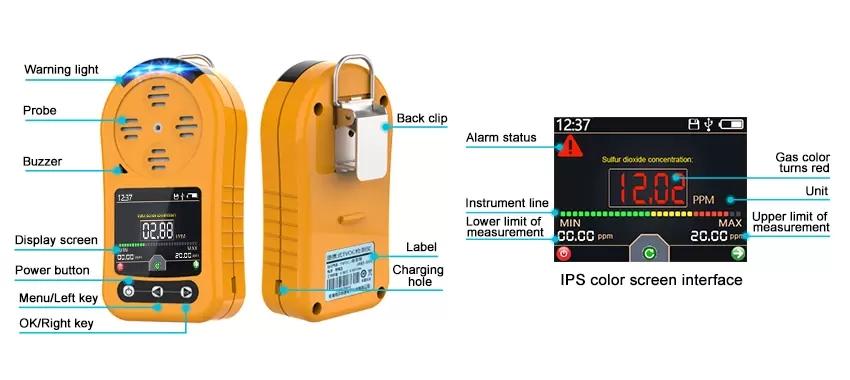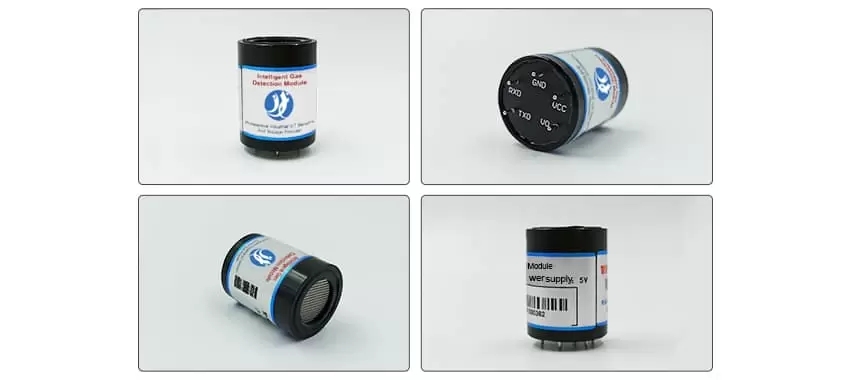Background:
MEMS Gas Sensor Module is a highly advanced gas sensor that is designed using Microelectromechanical System (MEMS) technology. This sensor is highly sensitive and can detect even the slightest traces of gas in the environment. The sensor is widely used in various industries such as automotive, healthcare, and environmental monitoring. In this article, we will provide a technical overview of MEMS Gas Sensor Module.

Operating Principle of MEMS Gas Sensor
MEMS Gas Sensor operates on the principle of chemiresistor, which means that it detects the presence of gas by measuring the changes in the resistance of the sensor. When the gas molecules come in contact with the sensing material, the electrical conductivity of the material changes, which is measured by the sensor. The change in resistance is directly proportional to the concentration of gas present in the environment.
The sensing material of MEMS gas sensor is composed of metal oxide. Highly sensitive to the presence of gases such as carbon monoxide, nitrogen dioxide and ozone. The metal oxide is coated on a thin film. The film is placed on a silicon substrate. The film is then etched using photolithography to create a series of sensing elements.
Benefits of Using MEMS Gas Sensor Module
MEMS Gas detector Module offers a range of benefits over traditional gas sensors. Firstly, the sensor is highly sensitive and can detect even the slightest traces of gas in the environment. Secondly, the sensor is highly accurate and can provide real-time data on the concentration of gas present in the environment. Furthermore, MEMS Gas Sensor Module is highly reliable and can be used in harsh environments. The sensor is also highly compact and can be integrated into various devices such as smartphones and wearables.
JXCT Mems gas sensor
The Mems sensor uses the Mems process to manufacture a micro-hot plate on an integrated substrate. Metal oxide semiconductor materials with low conductivity in clean air are used as gas-sensitive materials. When gas is detected in the ambient air, the conductivity of the sensor changes. The higher the gas concentration, the higher the conductivity of the sensor. The change in conductivity can be converted by a simple circuit into an output signal corresponding to the concentration of the gas.
Mems sensor has the advantages of small size, low power consumption, fast response speed block, high sensitivity, good adaptability and long service life

Applications of MEMS Gas Sensor Module
MEMS Gas detector Module has a wide range of applications in various industries. In the automotive industry, the sensor is used to detect the presence of carbon monoxide and other harmful gases in the car's exhaust system. In the healthcare industry, the sensor is used to monitor the breathing of patients suffering from respiratory diseases. Furthermore, MEMS Gas Sensors Module is also used in environmental monitoring to detect the presence of harmful gases in the atmosphere.
In conclusion, MEMS Gas Sensor Module is a highly advanced gas sensor that offers a range of benefits over traditional gas sensors. The sensor operates on the principle of chemiresistor and is highly sensitive, accurate, and reliable. The sensor has a wide range of applications in various industries such as automotive, healthcare, and environmental monitoring. Therefore, MEMS Gas Detector Module is a highly valuable technology that can help improve the quality of life and protect the environment.
MEMS (Micro-electromechanical systems) gas sensors are the most recent and sophisticated technological advancements in gas sensing. These devices have gained popularity due to their high accuracy, fast response time, low power consumption, and small size. MEMS gas sensors have diverse applications in various fields, including healthcare, automotive, aerospace, environmental monitoring, and industrial processes. This article will provide a detailed explanation of MEMS gas sensors, including their working principles, fabrication techniques, and applications.
 : +86 155 8830 2704
: +86 155 8830 2704 : jxdziot@gmail.com
: jxdziot@gmail.com
